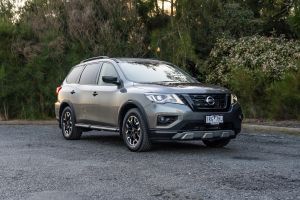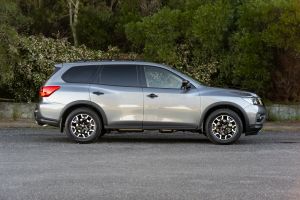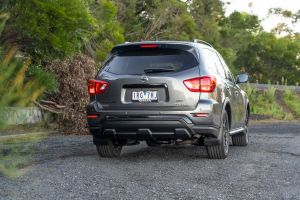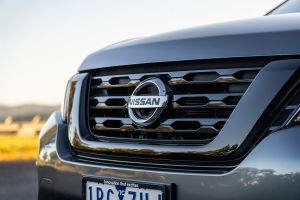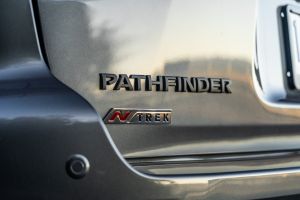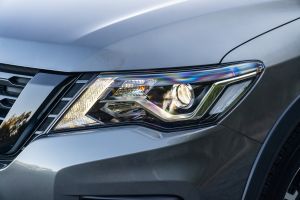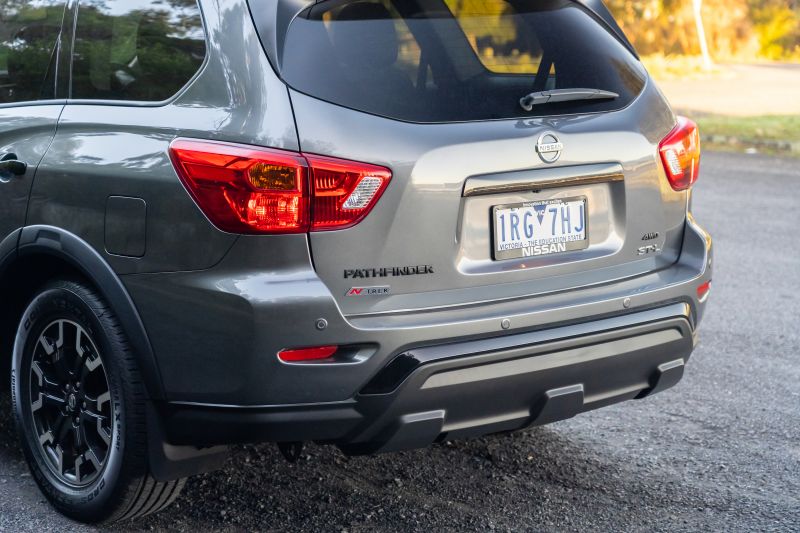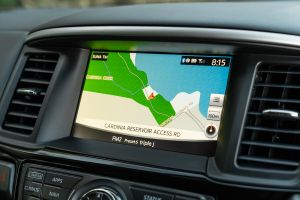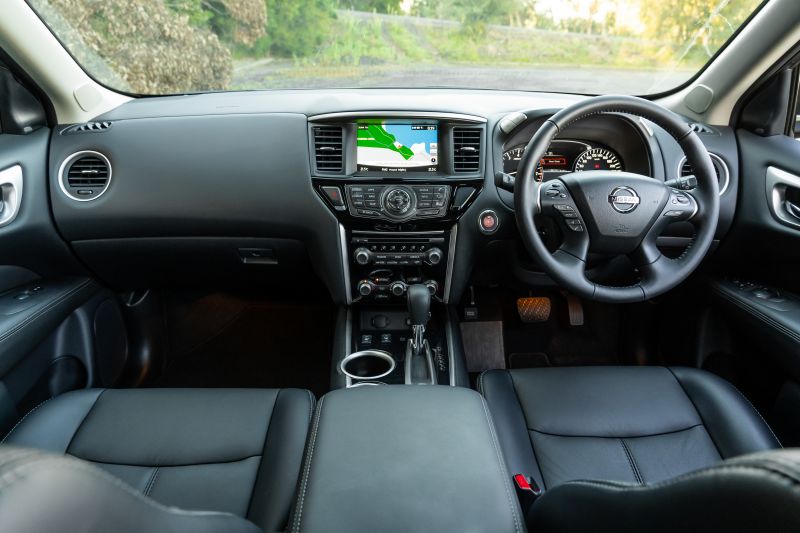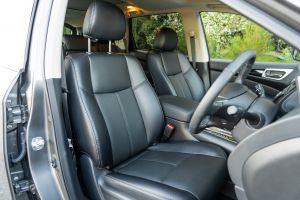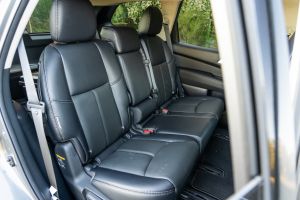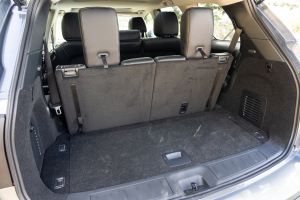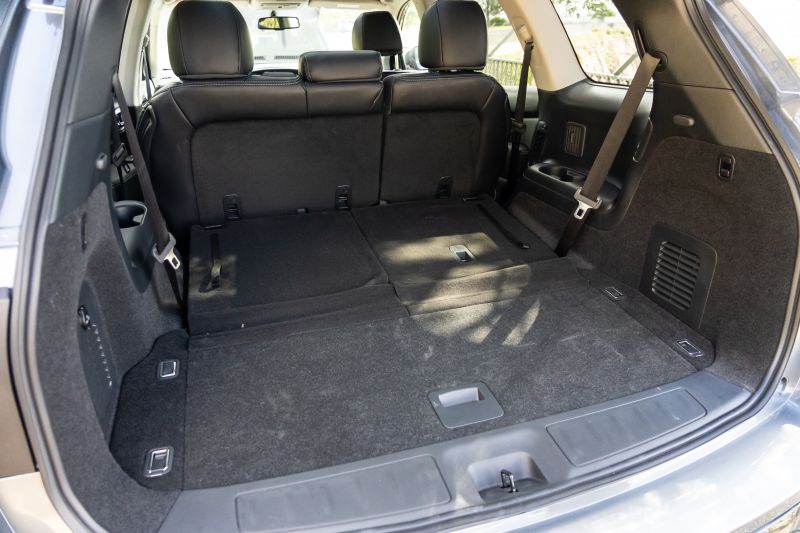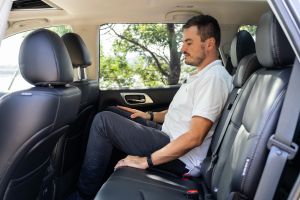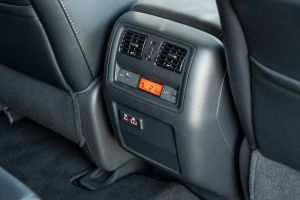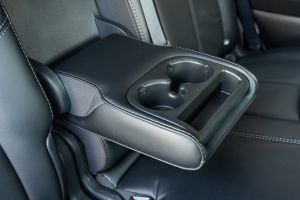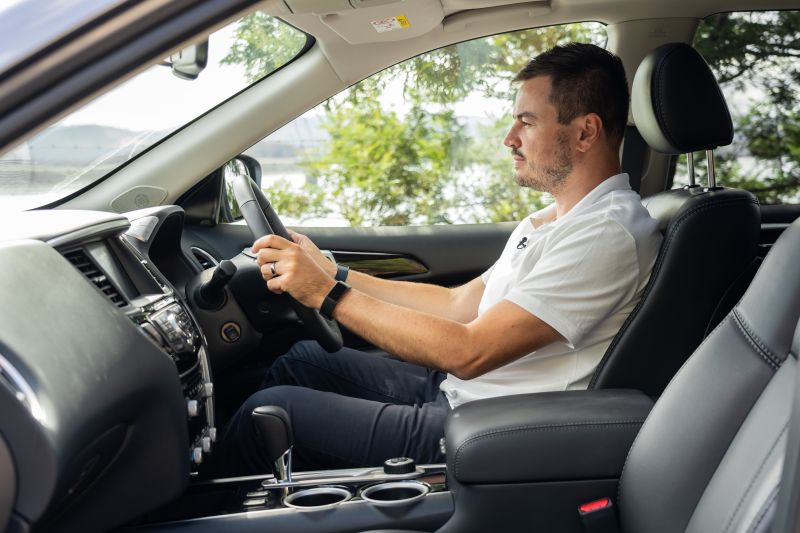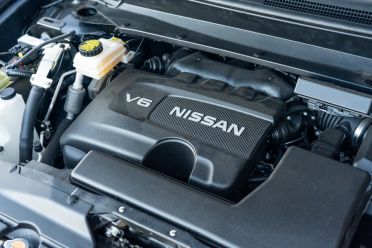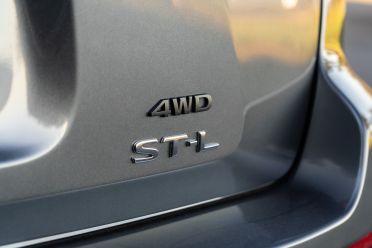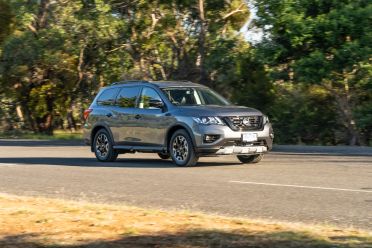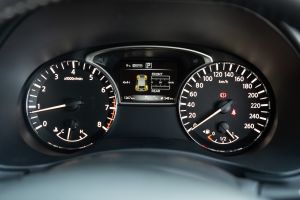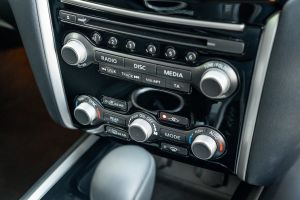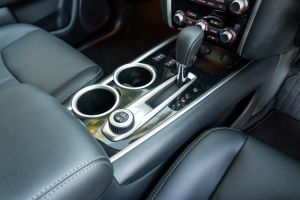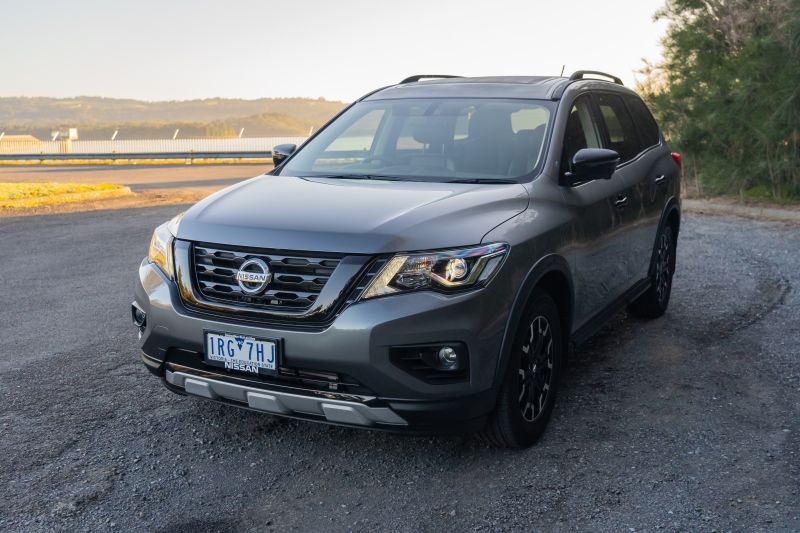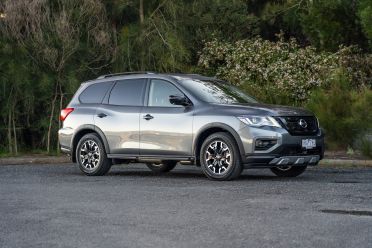The previous-generation Nissan Pathfinder was the default choice for buyers who didn’t want a Toyota badge, but needed a big family car capable of towing and going off-road.
That all changed with the fourth-generation Pathfinder, which swung its focus to become an American-focused SUV. Its purpose changed from an off-roader capable of towing to more of a cushy cruiser that’ll carry seven passengers in comfort.
Earlier versions of the fourth-generation Nissan Pathfinder appeared to suffer problems with their Jatco continuously-variable transmission (CVT), but they seem to have been resolved with the latest version.
Before a new Pathfinder hits the market in 2021, Nissan has started the process of rolling out special editions to clear stock.
The latest is the 2020 Nissan Pathfinder ST-L N-Trek, which adds a host of extra equipment as standard fitment.

How much does the Nissan Pathfinder ST-L N-Trek cost?
The Pathfinder range kicks off from $44,240 before on-road costs for the ST two-wheel drive. It then tops out at $70,140 before on-roads for the Pathfinder Ti hybrid.
Nissan’s new N-Trek models are available on Pathfinder ST+ and ST-L models in both two- and all-wheel drive trims, with the Pathfinder ST-L N-Trek all-wheel drive tested here costing $60,640 before on-roads. You can see more details on pricing and specifications for the 2020 Nissan Pathfinder here.
What do you get?
On the outside, standard equipment on the Pathfinder ST-L includes 18-inch alloy wheels, a front sunroof and panoramic rear glass roof, radar cruise control, LED daytime running lights, automatic headlights and windscreen wipers, privacy glass, LED headlights, rear parking sensors, a 360 degree reverse-view camera, and roof rails.
Inside the cabin you’ll find leather seats with heating, three-zone climate control, seven seats, keyless entry and start, power steering column adjustment, an auto-dimming rear vision mirror, an 8.0-inch touchscreen, satellite navigation, and a 13-speaker Bose sound system.
The N-Trek special edition is comprised primarily of cosmetic additions to the car, including a black V-shaped grille, black licence plate trim, black door handles and wing mirrors, black roof rails, black and silver 18-inch alloy wheels, a silver lower front guard, and wider 255mm tyres.
Is the Nissan Pathfinder safe?
ANCAP first tested the Nissan Pathfinder in 2013, where it scored a five-star safety rating.
While testing protocols have changed since then, the rating applies to the facelifted Pathfinder tested here.
During that testing it scored 35.73 out of a possible 37 point. You can read more about the ANCAP Pathfinder crash test here.
Standard safety technology includes autonomous emergency braking (AEB) and blind spot monitoring, but it misses out on vulnerable road user detection or a lane keeping assistant.
What is the Nissan Pathfinder ST-L N-Trek like on the inside?
Back in the ’90s, buttons were a pretty clear indication of how much money you spent on your car. More buttons meant more luxury, and more features.
In 2020 it’s kind of the opposite. Look at the interior of a Tesla, for example, and it’s all about minimalism. Brands such as Mercedes-Benz have tried to integrate almost everything into the infotainment system or voice commands.
The Pathfinder takes the ’90s spirit to a new level with buttons littered across the dashboard. The infotainment system has 23 individual buttons, it’s truly fascinating.
Speaking of the infotainment system, the 8.0-inch unit looks good on the surface, but it’s seriously let down by a lack of functionality and usability. It’s slow, features countless hidden menus, and comes with a voice recognition system that’s frustrating to use and has limited capability.
There’s no smartphone mirroring and the screen (whether it’s by virtue of the display or camera hardware) presents one of the poorest quality 360-degree views we’ve seen on a modern car. During the day it’s hard to make out objects and at night it becomes almost redundant.
If you put these points to one side, the cabin is huge. There is heaps of storage throughout, with cup holders in the first, second, and third rows. The glovebox is massive and there’s no lack of nooks to store the odds and ends you collect when you need an SUV with seven seats.
The seats are supremely comfortable too. They’re soft and will accommodate all body sizes. They’re like a big (warm, if you have the seat heater on) hug and make long drives a breeze.
Plenty of room
While toe room in the second row is slightly compromised, you'll be able to fit two adults in the third row. It also uses a clever slide and tumble seating system.
Second row passengers have plenty of knee and head room, and get their own panoramic glass roof in addition to the sunroof for the first row. The only issue worth calling out with the second row is the lack of toe room. That’s easily solved by the first row passengers elevate their seats, but it’s not something you should need to do in a car this size.
The second row splits and folds 60:40, and features a centre arm rest with cup holders. In addition to the third zone of cooling, there is a traditional USB-A port, along with a newer USB-C plug. The second row also slides forwards and backwards to offer extra leg room for third-row passengers.
Speaking of the third row, the system for accessing it is genius. In addition to being able to drop the second row to a ‘cargo mode’ which lays the seats almost flat, there’s a lever that slides the seat forward and collapses their base for almost uninterrupted access to the very back.
Kids also have a grab handle built into the C-pillar for easy access. Once you’re in there, there’s ample accommodation for adults if required – provided the second row is slid slightly forward. The third row comes with its own cup holders and the ability to fold 50:50 for extra storage room.
Cargo space comes in at 453 litres with the second row in place and expands to 2260L with it folded. There’s also more than enough room behind the third row to store a large suitcase or shopping bags. A space saver spare tyre is nestled under the rear of the car.
This is a supremely comfortable car and a proper seven seater, without actually looking like a seven seater. You’ll also find ISOFIX points on the two outboard seats and top tether points for four of the five passenger seats.
What’s under the bonnet?
Powering the Nissan Pathfinder is a hearty 3.5-litre naturally aspirated V6 engine producing 202kW of power and 340Nm of torque.
It drinks 91RON unleaded fuel and consumes a claimed 10.1 litres of fuel per 100km. On test we ended up sitting at around 13L/100km with a mix of city, highway, and country driving.
The engine works well with the continuously-variable transmission (CVT) to which it’s mated. With peak power on tap 6400rpm and peak torque available at 4800rpm, the CVT often flares to hit peak torque, but doesn’t sound overly thrashy or unpleasant inside the cabin.
As we mentioned earlier in the review, previous versions of the Jatco CVT in this car have suffered problems with shuddering and the chain belt drive slipping. Those issues appear to have been resolved, and we had no trouble during our time with the car.
How does the Nissan Pathfinder ST-L N-Trek drive?
Those cushy pews work with a pretty soft suspension tune to deliver a properly comfortable driving experience.
The Nissan Pathfinder rides beautifully over any kind of surface and never feels bothered by ruts, corrugation or potholes. This is typical of cars built for the American market, where you find higher highway speeds and undulating road surfaces.
The V6 engine feels punchy and offers enough response for overtaking and getting around traffic. The CVT can be a little slow to react at times, but the gearbox can be locked into a Sport mode that offers quicker responses to driver inputs.
As you’d expect in a car like this, the steering is fairly vague and doesn’t offer a great deal of communication. It’s not meant to be a sports car, so that isn’t of great concern, but don’t expect to have a bucketload of fun if you ditch the kids and find a mountain road.
If you’re planning on towing with the Pathfinder, it offers a 2700kg braked towing capacity.
You can remove off-roading from the bucket list. Unlike the last Pathfinder, this new generation only has a 180mm ground clearance, which makes it useless off-road. Despite being all-wheel drive, it doesn’t have the equipment or clearance to make it capable beyond the blacktop.
Drive options
All-wheel drive versions of the Pathfinder have a clever drive mode switching system that offers two-wheel drive, automatic and full-time four-wheel drive modes.
All-wheel drive Pathfinder models have a switch that allows the vehicle to move between full-time front-wheel drive to an all-wheel drive automatic mode that can send torque to the rear axle when it detects slip at the front.
There’s also a full-time all-wheel drive mode that will send torque to all four wheels – handy if you’re driving to the snow or on an unsealed surface. It’s worth keeping in mind the car is likely to use more fuel in all-wheel drive mode.
Visibility out the front and sides is great, while a blind spot monitor helps improve your awareness. Visibility out of the rear isn’t amazing, and is more compromised when you have little ones in the third row.
In general, the Pathfinder is really pleasant to drive. It’s not quite as punchy as the similarly-sized Mazda CX-9, but the V6 is more than adequate at moving a load of people and their things.
How much does the Nissan Pathfinder ST-L N-Trek cost to run?
Nissan offers the Pathfinder in Australia with a five-year, unlimited-kilometre warranty with 12-monthly service intervals – although those service intervals are at a relatively low 10,000km.
Over a five-year period the Pathfinder will cost $1738 to maintain, which is an average of $347.60 per service.
Keep in mind if you travel closer to the national kilometre average per year, you’ll end up requiring an extra two and a half services in the first five years, meaning you’ll be up for another $869 over the same period.
CarExpert’s take on the Nissan Pathfinder ST-L N-Trek
The Nissan Pathfinder is an incredibly competent car, and delivers the promise of a big seven seater that will suit most families.
Ultimately the Pathfinder isn’t really let down by its practical credentials.
It’s let down by ancient infotainment technology and a dated interior that lacks of the style and feel of other modern SUVs in this segment, such as the 2020 Mazda CX-9. It’s a real shame because it has everything it needs to be an exceptional family hauler.
There is a brand new one coming next year. If the new Juke is anything to go by, Nissan is progressing with style and technology – and it should mean the next Pathfinder continues with the family-friendly approach, but brings with it technology to boot.






